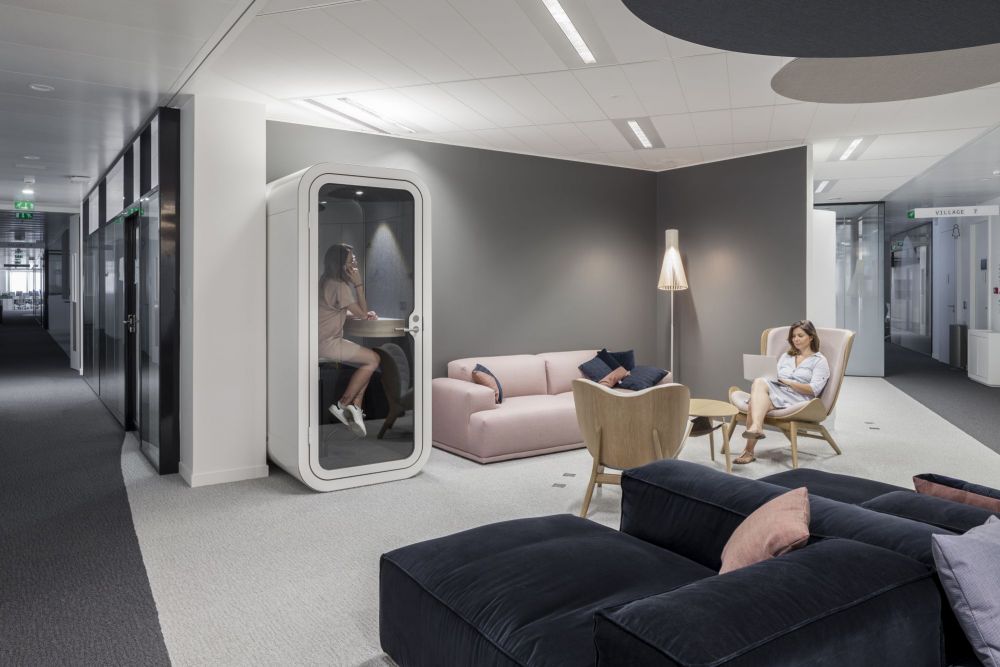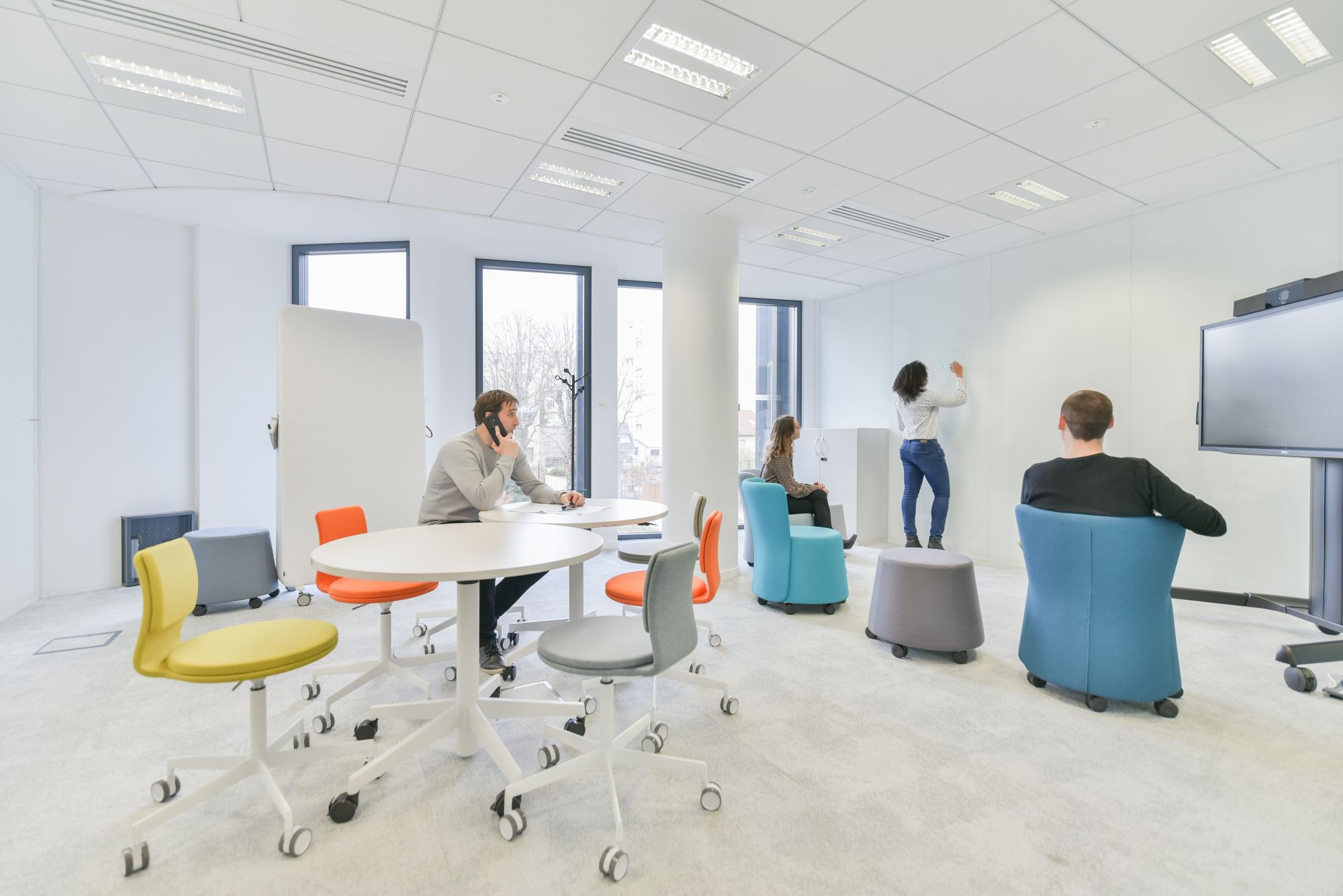- Home
- EN
- Kardham Group
- News
Towards a redefinition of working space-time
April 2021

With the health crisis and the discovery of our ability to work intensely outside the walls of the company, our work environment is changing. More and more flexible, it is called upon to expand. Nicolas Cochard, research and development manager for the Kardham Group, discusses the upcoming transformations and their challenges for us.
We hear it everywhere ... However, the term flexibility remains rather vague. Each of us may define it differently. So let's say for the sake of simplicity that this is the opposite of stiffness. Regarding work environments, flexibility is defined as the ability to be a resource as far as the user sees it. It should be noted that the work environment is not limited to the space that one finds in his "workplace" but includes the outside walls in its widest dimension. The work environment becomes flexible when it is practiced à la carte according to its needs, determined by many factors which may be the personal situation, the size of the home, the task to be accomplished, the agenda, the need for specific equipment, the presence on site required by the employer or the manager, or the desire to go to the office, quite simply. Therefore, faced with these multiple needs, often combined together moreover, the environment must become flexible, that is to say that within or outside the walls of the company, the employee has a multispatiality. which puts it in the best possible conditions to be efficient depending on the context. However, the flexibility of the working environment is not only a spatial issue, it is also a question of guaranteeing its cultural and organizational extensions.
The worker becomes flexible, so his environment becomes flexible too
With the health crisis and the discovery of our ability to work intensely outside the walls of the company, our work environment is set to expand. The mobile worker who can partially work where he wants to shatter his traditional spatial framework. The profound changes in the image of teleworking, due to the health crisis, have largely shattered the negative representations it often received. Now, in our workplace, at home or elsewhere, our work environment is expanding and mobility makes it possible to be comfortable and efficient with multispatiality. The flexibility of the work environment is also a question of mobility because flexibility goes hand in hand with high mobility capacity. If the work environment expands outside the walls of the company, this does not happen without an efficient transport network, under penalty of being a factor of constraints, which is contrary to the very idea of flexibility. . The large-scale nomadic worker is a worker who knows that he has optimal access to mobility.

The entire territory as a huge office tomorrow?
Obviously, being able to work almost anywhere now appears to be a possibility while it only affected a small minority of workers before the crisis. This even calls into question the redefinition of residential strategies since with a lesser presence on site, the radius of one hour to two hours of transport from the central place of work becomes acceptable and the `` TGV effect '' is likely to develop further. more. These new residential dynamics, still in their infancy but real, are then directly derived from this new spatio-temporal framework of work. In addition, ATAWAD (Any time, Any where, Any Device) is not limited to residential strategies and the worker can then envision his large working environment from third party places that can allow him access to a workstation without the constraint of transport to the metropolis, thus gaining in overall quality of life. The territory as a whole, as long as it is connected, potentially becomes one huge office with a hyper-flexible working environment. Perhaps this is a major factor in the "demetropolization" and the revenge of the territories, to use a term that is used mostly ... in the metropolises.
Despite the promises we make, do we know how to prove the supposed virtues of the flex office?
With office occupancy rates already approaching 50% of working time before the health crisis, one can obviously wonder about those we will see after the crisis when teleworking has flourished. Obviously, the flex office could be a reasonable response, but business managers will have to assume this economic reality of cost reduction to explain this choice. A lightly occupied workstation is expensive for the company and with even lower attendance rates with the development of teleworking, the elimination of the assigned position can be understood by employees all the more so if they find something in the balance. QVT gain. But we must then be careful not to overplay the flex card by promising that creativity, serendipity, collaboration or well-being will be there more than before, because no study has succeeded in demonstrating these mentioned gains. , even if we do not deny that it can be a lever. In any case, it is not the space project that will be paramount in finding the paths to these supposed virtues because a flexible work environment project must be part of a global cultural strategy at the level of the organization. . It is through the cultural dimension that the paths to performance are found. But by promising too much, we risk disappointing and we must therefore find our own formula towards the flex office so that the virtues are effective and not just theoretical.
“The territory as a whole, provided it is connected, potentially becomes a huge office with a hyper flexible working environment.“
If the worker is less at the office, what power can be given to the workplace to make it a central place?
The term place is not neutral. The place is a space appropriated by a group that makes sense to whoever goes there. And in a context where we go to the office less, we can legitimately question the meaning of going there. And, social beings that we are, we have an unchanging psychological need for territoriality. It is with this in mind that the office of tomorrow will have to be designed. As a central place in a more fragmented spatial journey, it will have to participate in the anchoring of identity. With a lot of branding, personalization and Do It Yourself, the office will play an even greater role in shaping the corporate culture. The centrality of the place then becomes the key word for employees who are more outside the walls and this partly involves the ability to create the place, to make it evolve, to skate it so that individual and collective stories can be woven into it. Under these conditions, perhaps the designed and prescribed space will give users a lot of leeway to let them partially produce the place over time. In a context of less frequentation of the place, the worst thing would be to go to a non-place, which is defined by its standard, tasteless character that does not arouse any particular emotion. Let us also not forget that the corporate space is a political space through which relationships between individuals are woven. From this perspective, frequentation of the place is therefore not to be neglected and absentees can, according to the formula, be wrong. Any organization is political because of the power issues that develop there and the space being the support, this calls into question the future modalities of presence in the office. Are we further removed from the political game of the company when the presence is less?

